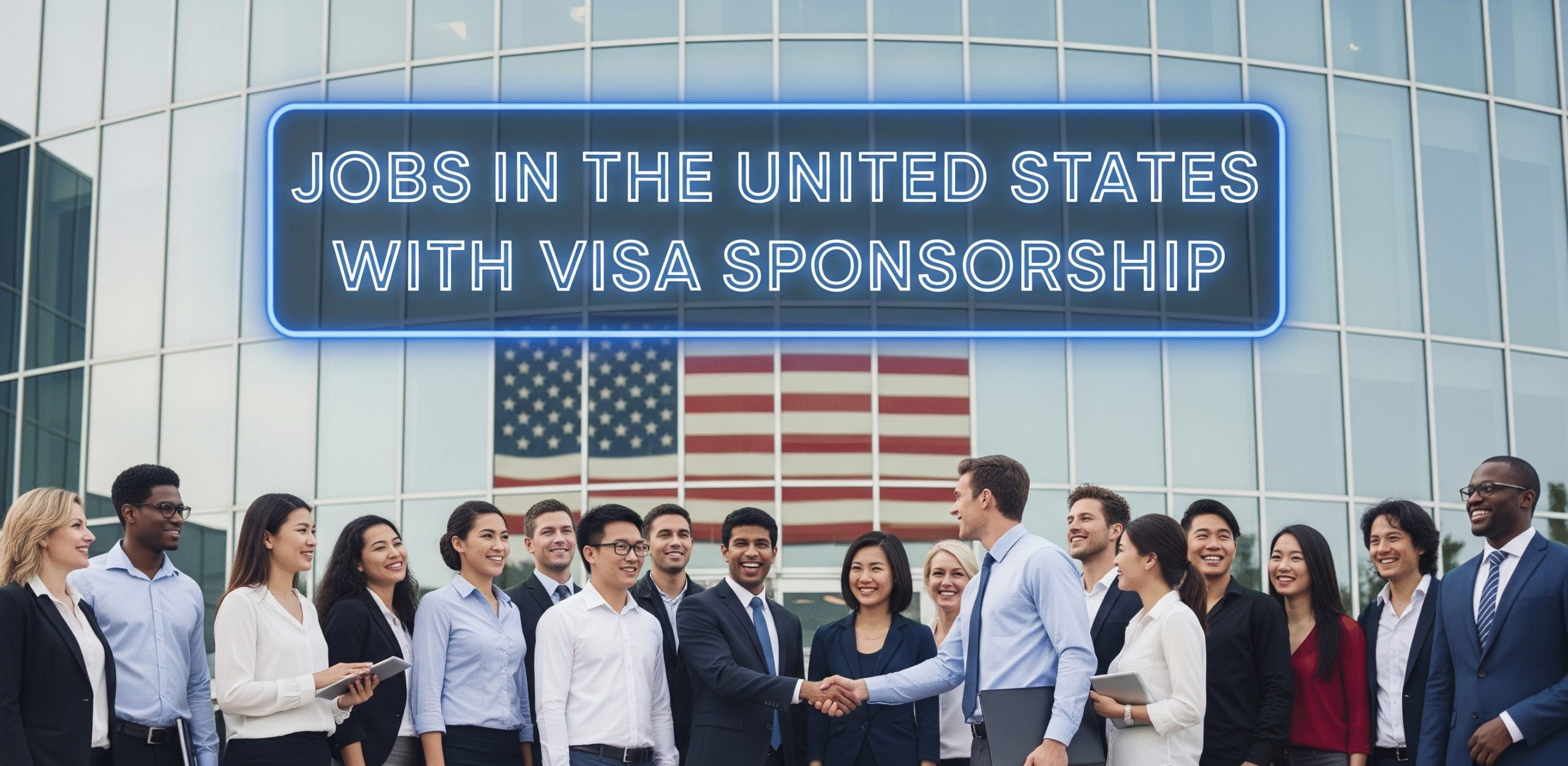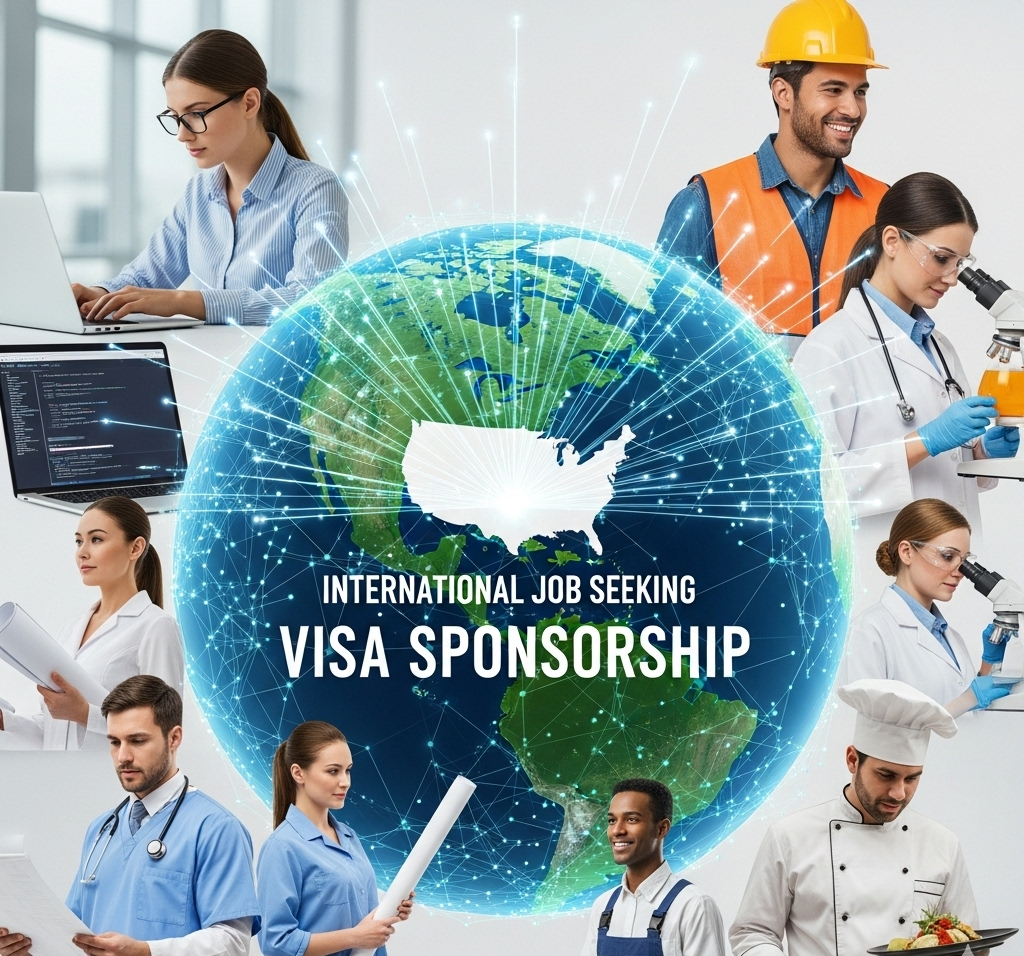The United States remains one of the most popular destinations for international workers. With its vast economy, diverse industries, and reputation as a land of opportunity, it attracts millions of people seeking better career prospects. For foreign nationals, one of the main routes to employment in the U.S. is through visa sponsorship. Many employers are willing to support talented workers by sponsoring their visas, enabling them to live and work legally in the country.
But what does visa sponsorship in the United States involve, which industries provide the most opportunities, and how can job seekers find positions that include sponsorship? This article explores the pathways, industries, companies, challenges, and realities of jobs in the U.S. with free visa sponsorship.
Understanding Visa Sponsorship in the U.S.
Visa sponsorship is the process by which an American employer offers a foreign worker a job and supports them in applying for the necessary work authorization. The employer files paperwork with U.S. immigration authorities, covering costs and providing documentation to prove the need for a foreign employee.
The most common sponsored visa types include:
- H-1B Visa: For specialty occupations such as IT, engineering, and healthcare. Requires a bachelor’s degree or higher in a relevant field.
- H-2A Visa: For temporary agricultural workers. Employers hire seasonal labor when there are not enough U.S. workers available.
- H-2B Visa: For temporary non-agricultural jobs in industries like hospitality, construction, and landscaping.
- O-1 Visa: For individuals with extraordinary ability in sciences, arts, business, or athletics.
- EB-3 Green Card: Employment-based immigration visa for skilled workers, professionals, and other workers. Often employer-sponsored.
“Free visa sponsorship” usually means that the employer pays the government filing fees, legal costs, and sometimes relocation expenses. While not every cost is covered, sponsorship significantly reduces the burden for international workers.
Immigration Pathways That Involve Sponsorship
Several immigration routes in the U.S. rely on employer sponsorship:
- H-1B Program
The most well-known pathway for skilled professionals, especially in technology and engineering. Employers petition on behalf of foreign workers. - H-2A and H-2B Programs
Seasonal visas for agricultural and non-agricultural temporary workers. Employers must prove shortages of U.S. workers before hiring foreigners. - PERM Labor Certification and EB-3 Green Card
Long-term sponsorship for permanent residency. Employers demonstrate the need for foreign workers and support their green card applications. - J-1 Visa Sponsorship
While primarily for exchange programs, some jobs and internships are arranged under this category with sponsorship. - O-1 Visa Sponsorship
For exceptional talent in fields such as science, sports, and entertainment. Employers sponsor foreign nationals with extraordinary skills.
Industries With High Demand for Sponsored Workers
The United States has a huge economy with diverse sectors. However, some industries are more reliant on foreign labor and more likely to offer sponsorship.
1. Technology and IT
The U.S. tech sector is world-leading but consistently short of talent. Silicon Valley, Seattle, Austin, and New York are hubs where companies sponsor foreign workers through H-1B visas. Common roles include software developers, data scientists, systems analysts, and AI specialists.
2. Healthcare
With an aging population and shortages of healthcare professionals, the U.S. sponsors many nurses, doctors, and medical technologists. Hospitals and clinics frequently support foreign healthcare workers to fill critical positions.
3. Agriculture
Seasonal agricultural labor relies heavily on the H-2A program. Jobs include fruit picking, harvesting, and farm operations. Employers often provide housing and partial sponsorship benefits.
4. Hospitality and Tourism
Hotels, restaurants, and resorts in seasonal tourist destinations often use the H-2B visa program to sponsor cooks, servers, cleaners, and front desk staff.
5. Construction and Skilled Trades
The construction industry faces worker shortages, particularly in fast-growing regions. Employers sponsor foreign workers for temporary and sometimes permanent roles.
6. Transportation and Logistics
Truck drivers, warehouse staff, and supply chain managers are in demand. Some companies sponsor visas for foreign drivers and logistics specialists.
Companies Known to Sponsor Foreign Workers
Many U.S. companies have a history of sponsoring international employees. Some of the most notable include:
- Technology: Google, Microsoft, Amazon, Apple, IBM, Facebook (Meta). These firms are among the largest H-1B sponsors.
- Healthcare: Major hospital networks, nursing homes, and medical recruitment agencies sponsor foreign nurses and doctors.
- Finance and Consulting: Deloitte, PwC, Ernst & Young, JPMorgan Chase, Goldman Sachs sponsor professionals in business and finance.
- Manufacturing and Engineering: Tesla, General Motors, Caterpillar, and other engineering firms sponsor engineers and technicians.
- Hospitality: Hotel chains like Marriott and Hilton sponsor workers under seasonal visas.
- Agriculture: Large farms and agricultural associations sponsor temporary workers under H-2A visas.
The Reality of “Free” Visa Sponsorship
While many employers cover the majority of visa-related costs, “free” does not always mean zero expenses for the worker. Typically, employers cover:
- Government filing fees for visas
- Legal and administrative costs
- Relocation packages (in some industries)
Workers may still need to pay for:
- Medical exams and vaccinations
- Background checks and police certificates
- Visa application fees for family members
- Travel expenses (unless included in relocation support)
It is essential to clarify with employers what exactly their sponsorship covers.
How to Find Visa-Sponsored Jobs in the U.S.
Finding jobs in the United States with sponsorship requires a targeted approach:
- Research visa-friendly companies: Apply to employers with a proven record of sponsorship, especially large corporations.
- Use job boards strategically: Some job portals allow you to filter listings by visa sponsorship availability.
- Tailor your resume: Highlight skills that are in shortage and demonstrate alignment with U.S. job standards.
- Network: Build connections through LinkedIn, alumni groups, and professional associations. Referrals increase chances.
- Stay informed about visa caps: Programs like H-1B have annual limits, so timing is crucial.
- Be clear about sponsorship: Indicate upfront that you require visa sponsorship to avoid misunderstandings.
Challenges of Visa Sponsorship in the U.S.
While employer sponsorship is a gateway to opportunity, it comes with challenges:
- Visa caps: The H-1B program has strict annual quotas, making it highly competitive.
- Processing delays: Immigration paperwork can take months.
- Complex regulations: Employers must meet strict legal standards, and workers must remain compliant.
- Job dependency: Workers’ visas are tied to specific employers, limiting flexibility.
- Geographic limitations: Seasonal work visas may place workers in rural or remote areas.
- High competition: Many global professionals seek U.S. sponsorship, especially in technology and healthcare.
Regional Differences in Sponsorship Opportunities
Sponsorship opportunities vary across the United States:
- California: Technology, entertainment, and healthcare lead in sponsorships.
- Texas: Strong demand in energy, engineering, and healthcare.
- New York: Finance, law, technology, and healthcare dominate.
- Florida: Hospitality and tourism jobs rely heavily on H-2B sponsorship.
- Midwest: Agriculture and manufacturing sponsorships are common.
- Rural areas: Many agricultural and healthcare jobs are located in less populated regions.
How to Improve Your Chances of Getting Sponsored
To enhance your prospects of securing a visa-sponsored job in the U.S.:
- Build expertise in high-demand fields like IT, healthcare, and engineering.
- Gain globally recognized certifications or licenses.
- Demonstrate English proficiency through test scores or experience.
- Be flexible about job location and sector.
- Apply early to account for visa caps and deadlines.
- Highlight cultural adaptability and international experience.
Conclusion
Jobs in the United States with free visa sponsorship represent a major opportunity for international workers. While “free” sponsorship often means partial rather than total coverage of expenses, many employers provide substantial support to bring in global talent.
High-demand industries such as technology, healthcare, agriculture, hospitality, and construction are consistently open to sponsoring foreign workers. Large corporations, hospitals, and even seasonal employers participate in sponsorship programs, making the U.S. accessible to both highly skilled professionals and temporary workers.
Success depends on targeting visa-friendly employers, preparing thoroughly, and understanding the realities of U.S. immigration law. With persistence and strategy, visa sponsorship in the U.S. can be the first step toward a rewarding career and a new life in one of the world’s most dynamic economies.


